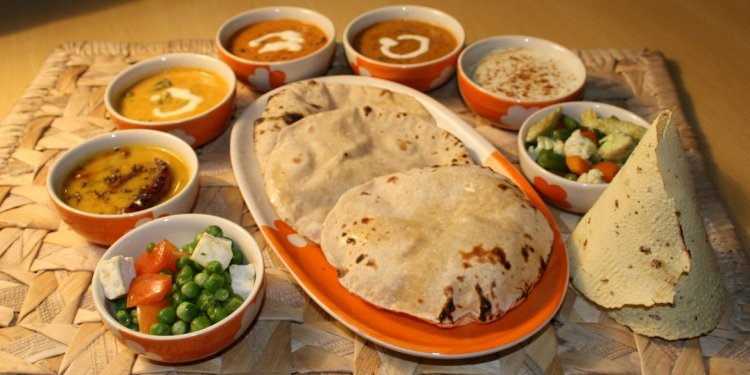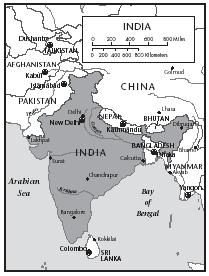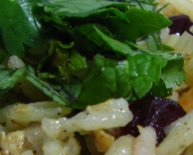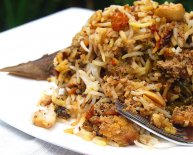
Traditional Indian Cuisine
The Republic of Asia, Asia's second-largest nation after China, occupies the largest part of the South Asian subcontinent, which it shares with Pakistan, Nepal, Bhutan, and Bangladesh. India's complete area is 3.3 million square kilometers (1.3 million square miles). Among India's many really serious environmental dilemmas tend to be land damage, liquid shortages, and air and liquid pollution (about 70 per cent of Asia's water is contaminated). Even in rural places, the burning of lumber, charcoal, and dung for gasoline, coupled with dirt from wind erosion through the dried out period, produces an air air pollution issue. Rice, the largest crop, is grown wherever the circumstances tend to be ideal.
2 RECORD AND FOOD
A few of Asia's meals time back five thousand many years. The Indus Valley individuals (which decided in what is now north Pakistan) hunted turtles and alligator, and crazy grains, natural herbs and flowers. Numerous foods from the Indus duration (c. 3000–1500 B.C.) stay common these days. Some feature wheat, barley, rice, tamarind, eggplant and cucumber. The Indus Valley peoples prepared with oils, ginger, sodium, green peppers, and turmeric root, which may be dried and ground into an orange dust
The Aryan-speaking individuals which entered Asia between 1500 and 1000 B.C used leafy vegetables, dried beans, and dairy food particularly yogurt and ghee (clarified butter). The Aryans additionally utilized herbs such as for example cumin and coriander. Black pepper had been widely used by 400 A.D. The Greeks brought saffron, whilst the Chinese introduced beverage. The Portuguese and British made red chili, potato and cauliflower preferred after 1700 A.D.
Perhaps the biggest contributors to Asia's culinary heritage will be the Muslim individuals from Persia and present-day chicken, which started arriving in India after 1200.
 These peoples, understood later since the Mughals, ruled most of Asia between 1500 and early 1800. They saw meals as a form of art, and lots of Mughal dishes are cooked with as many as twenty-five spices, plus rose-water, cashews, raisins and almonds.
These peoples, understood later since the Mughals, ruled most of Asia between 1500 and early 1800. They saw meals as a form of art, and lots of Mughal dishes are cooked with as many as twenty-five spices, plus rose-water, cashews, raisins and almonds.
Ingredients
- 1 large eggplant
- 1 tomato
- 1 onion
- 1 tsp fresh ginger, carefully chopped or grated
- 1½ teaspoons veggie oil
- ½ teaspoon turmeric, floor ½ teaspoon chili powder
- 1 teaspoon sodium
- 1 tsp garam masala (see dish below)
Procedure
- Wash and slashed eggplant and tomato into tiny cubes and finely chop onion and ginger.
- Heat the oil in a saucepan for 1 min.
- Include the onion and ginger and fry over method to high heat, stirring constantly, until golden-brown.
- Add the turmeric, chili powder, sodium, and garam masala to saucepan. Mix carefully.
- Include the eggplant and tomato to saucepan. Blend really and cover cooking pan with lid.
- Reduce steadily the temperature to reasonable and cook before the eggplant and tomato tend to be smooth, stirring occasionally to stop veggies from adhering to pan.
- After 20 minutes, eliminate the lid and still cook over reasonable temperature, stirring often, until liquid evaporates. The meal is prepared when the ingredients are mixed collectively as a thick puree.
- Provide with rice, wholewheat loaves of bread, or tortillas.
Serves 6.
- 2 teaspoons cardamom, floor
- 1 teaspoon cumin, ground
- 1 teaspoon black colored pepper, floor
- 2 teaspoons cinnamon
- ½ teaspoon cloves, surface
- Nutmeg, floor, to taste
Chapati, or Indian loaves of bread, is prepared throughout India. The lady inside picture in the remaining is employed in an average metropolitan home when you look at the town of Ghaziabad. The girl in the correct prepares chapati in a normal town cooking area in north India.
EPD Photos/Himanee Gupta
- Blend most of the components together.
- Store in an airtight container and increase meals as needed.
3 FOODS OF INDIANS
What Indians eat varies by area and religion. Northern Indians eat more level breads, while those from southern India prefer rice. In seaside states, eg Kerala and Bengal, fish meals are well-known. Chicken and mutton (sheep) are eaten more often in mountain and plains regions. Although Hindus stay away from consuming beef, Muslims avoid pork. Besides, numerous Indians—particularly Hindus, Buddhists, and Jains—are vegetarian.
Spices are used in many Indian dishes. If it is hot, herbs such chili peppers and garlic assist the body sweat and cool it down. In colder weather, herbs particularly cloves, cinnamon, ginger, black pepper, cardamom, and nutmeg assistance warm up the body.
Indian food is diverse, but the majority of dishes are cooked in the same way. The planning begins with frying onion, ginger, garlic or herbs like cumin seeds in oil at increased temperature. Meat, vegetables, flavorings eg yogurt, and herbs such as turmeric after that are added. The dish after that simmers at a reduced temperature before the ingredients tend to be prepared. At the conclusion of the planning, leafy natural herbs such as for instance cilantro and flavorings such as lemon juice tend to be included.
This style of planning are for this old-fashioned use of cow dung. For years and years, people would prepare by putting a pan together with patties created from cow dung. Like charcoal found in modern-day barbecues, dung initially produces a high heat, but then burns off slowly. Although middle-class and urban Indians have electric or gas stoves, many rural households nonetheless use cow dung (waste).
Dal, or spicy lentils, are shown within a traditional helping dish. Dal is generally created using red lentils, but any dried beans may be used.
- 1½ cups raw red dried beans (various other dried beans might be replaced)
- 4½ glasses liquid
- 1 Tablespoon canola oil
- 1 moderate onion, minced
- 2 cloves garlic, minced
- a few tiny hot green chilies, to taste, minced
- 1 tsp each: freshly grated ginger, surface cumin, and turmeric
- Nutmeg, pinch
- Salt, to taste

















